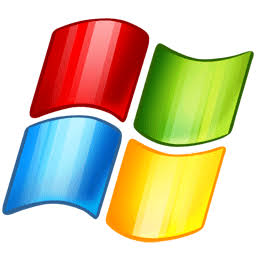Does anyone actually use
touchfor its intended purpose? Must be up there withcat.TIL it’s actually for changing timestamps.
Wtf. All these years I thought ‘touch’ was reference to Michelangelo’s Creation of Adam.
That’s beautiful, bro 🥲
touché
That’s not how you use “touché”. Pet peeve of mine.
Touché!
🇪🇳 🇬🇦🇷🇩🇪
or…
ʳᶦᵖᵒˢᵗᵉ…?
The intended use of
touchis to update the timestamp right?Yeah. It could just as well have issued a file not found error when you try to touch a nonexistent file. And we would be none the wiser about what we’re missing in the world.
“Do one thing and do it very well” is the UNIX philosophy after all; if you’re 99% likely to just create that missing file after you get a file not found error, why should
touchwaste your time?Because now touch does two things.
Without touch, we could “just” use the shell to create files.
: > foo.txtTouch does one thing from a “contract” perspective:
Ensure the timestamp of <file> is <now>
Systemd also does one thing from a contract perspective: run your system
Oh no.
:(
Does it do it well, though?
with this logic, any command that moves, copies or opens a file should just create a new file if it doesn’t exist
and now you’re just creating new files without realising just because of a typo
But this directly goes against that philosophy, since now instead of changing timestamps it’s also creating files
You can pass
-cto not create a file, but it does go against the philosophy that it creates them by default instead of that being an optionEDIT: Looking closer into the code, it would appear to maybe be an efficiency thing based on underlying system calls
Without that check, touch just opens a file for writing, with no other filesystem check, and closes it
With that check, touch first checks if the file exists, and then if so opens the file for writing
If you
touch -cit should work I guess
We use it to trigger service restarts.
touch tmp/service-restart.txtUsing
monitto detect the timestamp change and do the actual restart command.This is an interesting idea to allow non-root users to restart a service. It looks like this is doable with systemd too. https://superuser.com/a/1531261
Indeed. Replacing monit with systemd for this job is still on our todo list.
I sometimes use cat to concatenate files. For example, add a header to a csv file without manually copy and paste it. It’s rare, but at least more frequent than using touch.
$ cat file1 > output_file $ cat file2 >> output_file $ cat file3 >> output_fileI’m sorry!
That’s its intended purpose - combining files together (the opposite of
split). See the first line of the man page: https://man7.org/linux/man-pages/man1/cat.1.html
what is cat’s use if not seeing whats inside a file?
It is short for concatenate, which is to join things together. You can give it multiple inputs and it will output each one directly following the previous. It so happens to also work with just one input.
That’s why we have
batnowTo bonbatenate files?
Exactly
Bat bat bo-at
Bonbaten-fana fo-fat
Fee-fi-fo-fat
Bat!
Cat with wings? Isn’t a bat more like a rat with wings?
TIL
I never realized. Thanks!
It is to use along with
split. e.g.- You take a single large file, say 16GB
- Use
splitto break it into multiple files of 4GB - Now you can transfer it to a FAT32 Removable Flash Drive and transfer it to whatever other computer that doesn’t have Ethernet.
- Here, you can use
catto combine all files into the original file. (preferably accompanied by a checksum)
Doesnt computers do this automatically if you try to copy over a file larger than its per file size limit?
No. It just gives an error that it’s too big.
When you updated a Django server, you were supposed to touch the settings.py file so the server would know to reload your code. (I haven’t used any for a long time, so I don’t know if it’s still the procedure.)
There are many small things that use it.
it now has a hot reload, How long ago were you using Django?
cat
Ahhhhh, fuck. I’m quite noob with linux. I got into some rabbit hole trying to read the docs. I found 2 man pages, one is cat(1) and the other cat(1p). Apparently the 1p is for POSIX.
If someone could help me understand… As far as I could understand I would normally be concerned with (1), but what would I need to be doing to be affected by (1p)?
The POSIX standard is more portable. If you are writing scripts for your system, you can use the full features in the main man pages. If you are writing code that you want to run on other Linux systems, maybe with reduced feature sets like a tiny embedded computer or alternates to gnu tools like alpine linux, or even other unixes like the BSDs, you will have a better time if you limit yourself to POSIX-compatible features and options – any POSIX-compatible Unix-like implementation should be able to run POSIX-compliant code.
This is also why many shell scripts will call #!/bin/sh instead of #!/bin/bash – sh is more likely to be available on tinier systems than bash.
If you are just writing scripts and commands for your own purposes, or you know they will only be used on full-feature distributions, it’s often simpler and more comfortable to use all of the advanced features available on your system.
If you execute a binary without specifying the path to it, it will be searched from the $PATH environment variable, which is a list of places to look for the binary. From left to right, the first found one is returned.
You can use
which catto see what it resolves to andwhereis catto get all possible results.If you intentionally wants to use a different binary with the same name, you can either directly use its path, or prepend its path to $PATH.
I used it recently to update the creation date of a bunch of notes. Just wanted them to display in the correct order in Obsidian. Besides that though, always just used it for file creation lol
I don’t know anything about Linux but I do love touching cats
You would love Linux cli.
Cat is actually super useful.
I mean, timestamps aren’t really all that useful. Really just if you do some stuff with makefiles but even then it’s a stretch. I did once use cat for its intended purpose tho, for a report. We split up the individual chapters into their own files so we have an easier time with git stuff, made a script that had an array with the files in the order we wanted, gave it to cat and piped that into pandoc
Touch is super useful for commands that interact with a file but don’t create the file by default. For example, yesterday I needed to copy a file to a remote machine accessible over ssh so I used
scp(often known as “secure copy”) but needed totouchthe file in order to create it beforescpwould copy into itSorry, what?
Yes, Nextcloud can’t sync files with a timestamp of 0
Yup, stupid zip files and their directories from 1970
I use it regularly
Yes, when you are for example checking if the permissions in the directory are correct, or if you want to check if your nfs export is working. It’s one of those commands that once you know it exists, you WILL find a way to use it.
Well, those aren’t really the intended use either.
I use it all the time, especially in ssh on a server.
Creating an empty file is one of its intended purposes. Unix commands were designed as multi-purpose primitives, so they could be reused and composed to handle many different tasks. The touch command is no exception.
i use both frequently but im also a pretty dumb user
These are some weird looking dolph— oh
Remember to confirm consent before touching.
You can only touch in places where you have permission to touch.
sudo touch woman
Iseif is not in the sudoers file. This incident will be reported.
to whom, perchance?

Omg I hadn’t seen this one before, laughing so hard

Same energy as Joan Cornella’s comics
'Murica!
Is there a command that’s actually just for creating a new file?
Nope. If you open a nonexistent path and you have permissions to write to that directory, then that file is created.
I guess printf “” > file
Feels dangerous to run. What happens if the file already exists and has something important in it?
touch -ais probably betterThe other command could just be
printf '' >> fileto not overwrite it. Or even simpler>fileand then interruptor
:>>filethen you don’t need to interrupt.“:>>” is “append null” right? Do you get a file with a single ASCII NUL or is it truly empty?
Not really. I believe : is the “true” builtin. So it’s like running a program that exits with zero and writes nothing to stdout. The >> streams the empty stdout into the named file.
$ :|wc -c 0 $ touch /tmp/f; :>>/tmp/f; wc -c /tmp/f 0 /tmp/f
that’s awesome, did not know about that handy operator!
Yeah!
it’s basically a noop, I use it as a placeholder when I’m writing a script, since bash doesn’t accept code blocks with no commands
I mean,
nano filenamewill work, but there’s no mkfile that I can find…$>filenamewould also work, but it’s not explicitly for creating a new filemost shells will accept outputting from a silent command to a file, e.g.
:> foo.txt(where:is the posix synonym to thetruecommand)How often do you actually need a blank file though? Usually you’d be writing something in the file.
I’m betting that’s why none ever materialized. Most tools that can manipulate a file, can also create that file first, so there’s just never been a usecase.
Right-clicking the desktop to create a new txt file in Windows feels so natural, but I can’t really think of any time you’d want to create a new file and do nothing with it in a CLI.
You might if some other program checks whether that file exists and behaves differently depending on that.
But even still, what’s a realistic usecase that would that involve needing a blank, unmodified file in that instance?
One use case is if you’re running a web server that is configured to return a “maintenance” page instead of the live site if a particular file exists. Which is actually pretty cool because then you don’t have to update the config when you need to do something or let your users get a bunch of 502 errors, you just
touch maintenanceand you’re good.That’s a good one!
I’m way to used to doing
nano file.txtthat I always forget about touch.Although most times, if I create a file, it’s to put something in it
If you need multiple files for testing a script or such:
touch file{1..5}.txtIf you’re having a party or whatever: touch *
I do the opposite, I forget I can just create a file with nano. I run touch then open it with nano after to edit.
That’s weird. Stop it.
I usually do
open filenamebecause I prefer GUI text editors.
As a Linux user, that is truly magical, and beautiful.



























